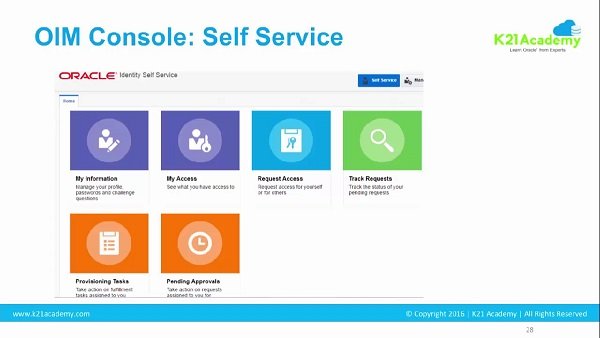Oracle is a global leader in cloud computing, enterprise software, and database solutions. One of its key offerings is Oracle Identity Manager (OIM). This solution helps businesses secure their digital environments by managing user identities and controlling access to resources. OIM.OracleCorp.Com is a vital portal within this system, where users and administrators can manage roles, permissions, and access requests. In this article, we will explore OIM.OracleCorp.Com, its purpose, and how it benefits organizations in securing their operations.
Table of Contents
ToggleWhat Is OIM.OracleCorp.Com?
OIM.OracleCorp.Com is the login portal for Oracle Identity Manager. It provides a central interface for both administrators and users to manage access to enterprise systems and applications. The portal ensures that only authorized personnel can access sensitive data, thereby reducing the risk of data breaches. Through OIM, organizations can automate key identity management tasks, such as user provisioning, de-provisioning, and role management, which streamlines operations and enhances security.
By using OIM.OracleCorp.Com, businesses can create, modify, and remove user accounts. Administrators can also assign or revoke access rights and manage roles. This centralized system ensures security compliance and allows businesses to enforce governance policies effectively. OIM supports users across the enterprise, helping to prevent unauthorized access and ensuring a seamless identity management experience.
Key Features of OIM.OracleCorp.Com
The OIM.OracleCorp.Com portal offers a wide range of features that benefit both administrators and end-users. These features simplify tasks, improve security, and enhance operational efficiency.
1. User Provisioning and De-Provisioning
One of the primary tasks managed through OIM is user provisioning. This process involves creating user accounts and assigning them appropriate permissions to access company systems. The automation of this task reduces the chance of human error and increases efficiency.
De-provisioning is just as important. When an employee leaves the company or no longer needs access to a system, OIM ensures that their access rights are promptly revoked. This process helps prevent unauthorized access after an employee departs, further protecting the organization’s sensitive data.
2. Access Request Management
Access request management is another key feature of OIM.OracleCorp.Com. Users can request access to specific systems or applications. These requests go through an approval process, which may involve several approvers. This workflow ensures that all access requests are reviewed and authorized appropriately. By streamlining this process, OIM reduces administrative burden while maintaining compliance with security policies.
3. Role-Based Access Control (RBAC)
Role-Based Access Control (RBAC) is fundamental to the Oracle Identity Manager system. With RBAC, administrators create roles based on specific job functions within the organization. Each role comes with specific permissions, ensuring that employees only have access to the resources they need to perform their jobs.
For example, a user in the HR department might have access to employee records but not to financial data. By limiting access in this way, OIM ensures data privacy and reduces the risk of unauthorized access.
4. Audit and Compliance
OIM also includes robust audit and reporting features. These tools allow administrators to track user activities, monitor access to sensitive systems, and generate reports for compliance purposes. With the ability to quickly access and review logs, organizations can demonstrate adherence to regulatory requirements like GDPR or HIPAA.
How to Access OIM.OracleCorp.Com
Accessing oim.oraclecorp.com is simple, but users need valid credentials to log in. Here is how to get started:
- Navigate to the Portal: Type oim.oraclecorp.com into your browser’s address bar to open the login page.
- Enter Your Credentials: Input your username and password. These credentials are usually provided by the organization’s IT team. If your company uses Oracle Single Sign-On (SSO), you will use those credentials to log in.
- Two-Factor Authentication (2FA): For enhanced security, you might need to complete a two-factor authentication (2FA) step. This adds an extra layer of protection for your login process.
- Access Your Dashboard: Once logged in, you will see your personal dashboard, where you can review your roles, access rights, and request permissions.
User Role and Permissions in OIM.OracleCorp.Com
The roles assigned to users determine what they can do within the OIM portal. These roles include:
- End Users: Regular employees who need access to specific applications or systems. They have limited permissions to request access or view personal information.
- Managers: Managers have the ability to approve access requests, monitor user activity, and manage teams.
- Administrators: Administrators hold the highest level of access. They manage system configurations, user provisioning, and role assignments.
- Auditors: Auditors review logs and reports to ensure the organization is compliant with security and regulatory policies. They typically do not make changes to user access.
User Permissions and Security
In OIM, permissions are tightly controlled. Administrators assign roles based on the user’s responsibilities, ensuring that each individual only has access to the resources they need. This helps safeguard the organization’s sensitive data.
The Importance of OIM in Enterprise Security
OIM is a vital tool in securing an organization’s digital environment. As cyber threats continue to evolve, businesses need an efficient way to manage user access to prevent unauthorized activity. OIM provides a robust framework for access control, ensuring that only the right individuals have access to critical systems.
In addition, OIM minimizes the risk of insider threats. By ensuring that employees and contractors only have the access they need, OIM helps prevent unauthorized actions and protects the organization’s data from internal breaches.
Benefits of Using OIM.OracleCorp.Com for Enterprises
Several key benefits come with using oim.oraclecorp.com for identity and access management:
- Streamlined Operations: Automation of tasks such as user provisioning and de-provisioning increases efficiency and reduces manual intervention.
- Enhanced Security: With role-based access control, two-factor authentication, and audit capabilities, OIM strengthens organizational security and reduces the risk of unauthorized access.
- Cost Reduction: Automation of identity management tasks lowers operational costs by eliminating the need for extensive manual processes.
- Regulatory Compliance: OIM makes it easier to comply with various regulations, such as SOX, HIPAA, and GDPR, by providing detailed reports and audits.
Conclusion
OIM.OracleCorp.Com is an essential portal for managing user identities and access within Oracle Identity Manager. By offering features like user provisioning, access request management, and role-based access control, OIM simplifies identity management and strengthens security. Organizations that use OIM benefit from improved efficiency, reduced risk, and enhanced compliance.
Whether you are a user requesting access or an administrator managing roles, oim.oraclecorp.com provides the tools you need to ensure secure, compliant, and efficient access to your organization’s resources.




